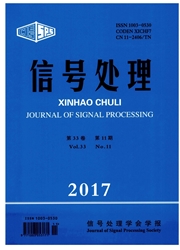

 中文摘要:
中文摘要:
协作多点(CoMP)是未来无线通信中的关键技术之一。多个小区基站通过对信道状态信息(CSI)和用户数据信息的不同程度共享,实现多基站协作传输,将传统意义上的干扰转化为对用户有用的信号,从而提高频谱效率,极大改善小区边缘用户的性能。块对角(BD)算法通过在干扰信道的零空间上设计合适的预编码向量,完全抵消干扰。本文将BD算法用于多小区联合传输,从空间维的角度剖析了其干扰抵消和宏分集增益的工作原理,并将其与迫零(ZF)算法,最小均方误差(MMSE)算法,时分多址(TDMA)以及单用户特征值波束成形算法比较,分析了各种算法的优劣。同时将协作BD算法与非协作BD算法比较。仿真结果表明BD算法优于上述预编码算法,协作传输优于非协作传输。
 英文摘要:
英文摘要:
Coordinated Multi-point Transmission(CoMP) is one of the key technologies of future wireless communications.Base station(BS) in different cells share in different extent both channel state information and data signals of their respective users to convert conventional interference to useful signals,which increases spectrum efficiency and greatly improves the quality of service of the users in cell edge region.In this paper,Block Diagnalization(BD) algorithm which designs proper precoding vectors in the null space of interfering channels in order to completely mitigate interference is applied in multicell joint transmission and compared with other algorithms, such as zero forcing algorithm,minimum mean square error algorithm,time division multiple access and single-user eigenbeamforming. The principles of interference mitigation and macrodiversity gain of BD are analyzed from the view of spatial dimension and the performance corresponding to each algorithm is discussed.Simulation results show that BD outperforms the algorithms aforementioned.Meanwhile, coordinated BD is compared with uncoordinated BD.
 同期刊论文项目
同期刊论文项目
 同项目期刊论文
同项目期刊论文
 A New Compressive Feedback Scheme Based on Distributed Compressed Sensing for Time-Correlated MIMO C
A New Compressive Feedback Scheme Based on Distributed Compressed Sensing for Time-Correlated MIMO C Novel schemes of CQI Feedback Compression based on Compressive Sensing for Adaptive OFDM Transmissio
Novel schemes of CQI Feedback Compression based on Compressive Sensing for Adaptive OFDM Transmissio 期刊信息
期刊信息
